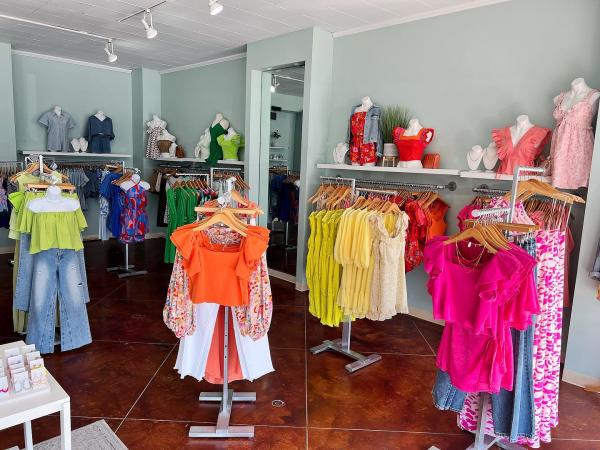A Deep Study the Globe of High-Fashion Runways: Understanding Clothing as Art
High-fashion paths have actually arised as arenas where clothes transcends its utilitarian beginnings, evolving into a sophisticated type of creative expression. Designers, a lot like skillful musicians, weave complex stories via form, color, and fabric, testing traditional standards and redefining charm requirements. These shows are greater than mere displays; they are immersive experiences, where every stitch and seam narrates rich with cultural importance and avant-garde development. As we discover these sartorial spectacles, we must ponder: what role does style play in shaping social worths, and exactly how does it show the ever-changing tapestry of human feeling and identity?
The Evolution of Runway Shows
The trajectory of path shows has transformed dramatically over the decades, progressing from exclusive industry events to fascinating spectacles that blend style with art. Generally, runway programs were intimate events, held in ateliers or tiny venues, largely gone to by buyers and sector insiders. These early discussions concentrated on the garments' workmanship and industrial stability, supplying a straight and practical display of seasonal collections.
As the fashion market broadened, the nature of runway programs started to transform. The 1970s and 1980s noted a turning point, with designers seeking to differentiate themselves through more theatrical presentations.
Over the last few years, technology and social media sites have even more revolutionized path programs, making them accessible to a worldwide target market. Livestreaming and digital platforms have equalized style, permitting fanatics worldwide to witness these occasions in real-time (boutique fashion). This evolution shows a wider cultural change, where high-fashion paths offer as a vibrant crossway of style, efficiency, and development
Designers as Visionary Artists
Developers in the high-fashion sector have blurred the lines in between practical garment production and the conceptual realm of art. By embracing imaginative disciplines such as sculpture, paint, and progressive installations, developers craft garments that test traditional style norms and raise them to art kinds.
Visionary developers attract motivation from a myriad of sources, including abstract art, historic references, and personal stories. They have a distinct capacity to visualize and emerge concepts that push the limits of standard style, usually redefining visual paradigms at the same time. This innovative ingenuity is showcased through significant silhouettes, ingenious materials, and elaborate workmanship, which welcome viewers to experience style as even more than simply wearable items.
Moreover, the path functions as a canvas for these musicians, where lights, songs, and set design coalesce to create immersive experiences. These presentations are not simply display screens of clothes however are orchestrated performances that stimulate emotion and prompt idea, affirming the developer's role as a real musician in the contemporary social landscape.
Cultural Impacts in Fashion
Cultural tapestry weaves its detailed patterns right into the fabric of style, influencing designers around the world. The vibrant interchange of cultural stories, customs, and icons informs and influences collections that poise high-fashion paths. Developers carefully attract from their heritage or engage with societies distinctive from their very own, crafting garments that offer as visual stories. This social dialogue not just improves the aesthetic diversity however likewise cultivates a much deeper understanding and admiration of international identities.
The influence of society on fashion is usually seen in the reinterpretation of traditional Continued garments and patterns. For example, using Japanese kimonos, Indian saris, or African prints in modern style mirrors a blend of cultural authenticity and modern looks. Developers such as Valentino's Pierpaolo Piccioli and Alexander McQueen's Sarah Burton have been understood to include abundant cultural themes right into their couture collections, equating background right into wearable art.

Technology in Material and Style
Advancement in material and style constantly reshapes the landscape of high-fashion, pressing boundaries and redefining opportunities. In the last few years, technical innovations have actually significantly added to this advancement, presenting materials that challenge conventional assumptions. Textiles ingrained with smart fibers, efficient in altering color or regulating temperature, are no more confined to the realm of sci-fi. Designers are increasingly exploring the assimilation of innovation, such as 3D printing, which permits for the production of complex structures that were formerly unbelievable.
The fashion sector is seeing a rise in the use of eco-friendly materials, obtained from recycled plastics, natural fibers, and even naturally degradable parts. Developers are embracing these materials to craft garments that are both aesthetically striking and mindful of their ecological impact.
In terms of style, avant-garde shapes and experimental types are continually reinventing the runway. By including innovative techniques and non-traditional products, developers cultivate garments that obscure the line between style and art, establishing brand-new requirements for imagination and expression in the high-fashion ball.
Impact of Style on Society
Fashion possesses an extensive impact on society, offering as both a their website reflection of social identification and a driver for social modification (boutique fashion). Through its evolution, fashion has mirrored societal shifts, enveloping the zeitgeist of numerous eras.
Moreover, fashion has the power to bridge social voids, fostering understanding and appreciation amongst varied groups. As globalisation increases, the cross-cultural exchange of fashion ideas becomes increasingly significant, advertising inclusivity and variety. The surge of streetwear, stemming from city subcultures, highlights exactly how fashion can go beyond socio-economic borders, approving people a way of self-expression and empowerment.
Essentially, fashion is not merely regarding looks; it is a dynamic pressure that affects values, mindsets, and societal development (boutique fashion). By continuously communicating with social and social currents, fashion continues to be an essential part see of the cumulative human experience

Verdict
Developers, similar to visionary artists, orchestrate collections that reflect identification, emotion, and social stories, testing conventional aesthetics. This intersection of fashion and virtuosity not only mesmerizes audiences around the world but also affects societal understandings and promotes a deeper recognition for social variety.

Cultural tapestry weaves its detailed patterns into the fabric of style, affecting developers worldwide.Style possesses a profound influence on culture, offering as both a representation of cultural identification and a driver for social change.